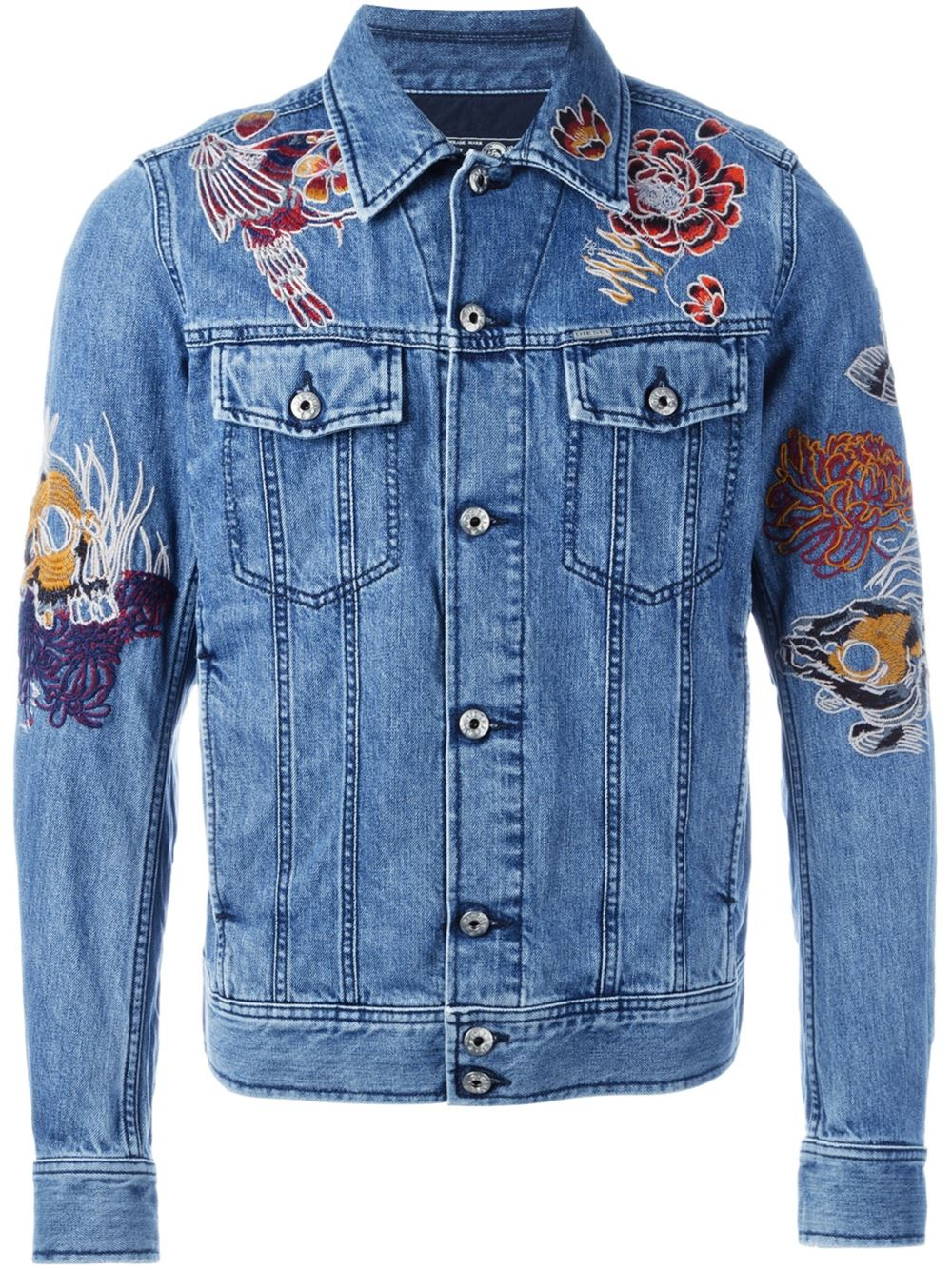

Pair it up with ripped jeans, a simple tee and sneakers and you’re sure to look smooth.
Embroidery on denim jacket zip#
The timeless black faux leather jacket or brown bomber jacket works well not only when you zip away on your bike, but also for parties and outings. They’re stylish, edgy and incredibly versatile. If you pick bright floss, your project will look newer for longer.Winter is almost here, and if you haven’t purchased anything at all, consider it a blessing in disguise for the best collection is available right here on AJIO.īiker and bomber jackets are classic favourites among most men. Plus, your garment is going to be worn and laundered again and again, so eventually the colors will start to fade. Reds, oranges and yellows stand out on both light and dark washes. When picking floss colors, go bold and bright. Use fill stitches like satin stitch, long-and-short stitch and chain stitch throughout your design, keeping in mind that loose stitches won’t wear well, so you don’t want to make your satin stitches too long. More delicate designs, like blackwork embroidery, don’t have the same eye-catching effect (unless made in heavier threads, like 6-ply floss). Mind Your StitchesĮmbroidery designs with heavier stitch counts are denim’s BFF.

You also want to be a sewer embroider, not a stabbing one - meaning you should try to work from the top as much as possible. (Boot cut, for example, is a bit easier to tackle than skinny jeans.) McTee suggests using a little 4″ hoop and moving it around one stitch area at a time. But if you’re leveling up those skills and dying for that over-the-seam design, you can use pliers to pull your needle through the thick layers of fabric while wearing a leather thimble for extra protection.Īnd while embroidery on jeans looks stellar, it might be difficult to stitch up the legs depending on the size and cut. If you’re a beginner, it’s best to avoid embroidering across any seams, especially on bulky jean jackets. Take Note of Tricky Areasĭenim embroidery isn’t as seamless as embroidering on cotton or linen - literally. If you choose to work sans-hoop though, she says it’s best to use simpler motifs and basic stitches.

Use 6-strand cotton embroidery floss to bring your design to life, and you can opt to stitch with or without a hoop. While you can use typical embroidery needles for denim embroidery, McTee prefers working with chenille needles because the eye is a little larger. When you’re ready to stitch, trace the design onto stabilizer with a transfer marker or chalk pen, trim so there’s a ⅛”-¼” allowance around the design, then hand-baste the stabilizer to the denim with sewing thread. It’ll give your stitches some reinforcement and easily comes off just from soaking the garment in a bowl of water. McTee recommends using a non-sticky, wash-away lightweight stabilizer. Though denim is thick and durable, it still needs to be properly stabilized when embroidered to avoid puckering.

Just remember to stitch on the fastener side of the placket so your handiwork is visible. In general, pocket flaps and the placket - the area where the buttons and snaps are located - are great places to embellish. Because while an area might look prime for an embroidery design, once you try it on you may realize it could be awkwardly placed, or hidden altogether. Plan Your DesignĮvery garment is different, so try it on to see how it fits your body and how you plan to wear it. It’s hard to find a wardrobe without denim, so why not make your blues one-of-a-kind with a little hand embroidery? Textile artist Kat McTee, instructor of Craftsy classes Startup Library: Hand Embroidery and Hand Embroidery on Denim, shares her must-know tips for personalizing your daywear.


 0 kommentar(er)
0 kommentar(er)
